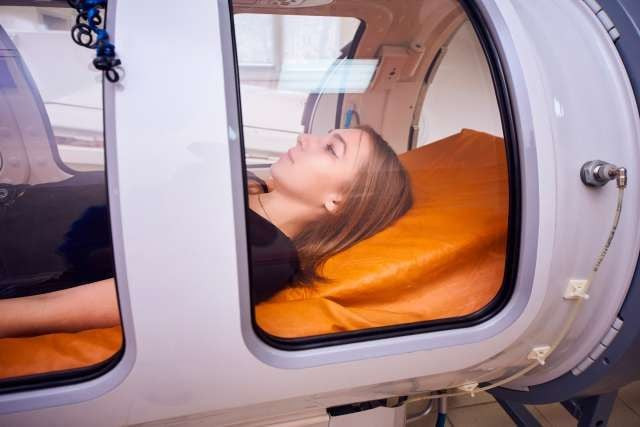Hyperbaric oxygen therapy: A decades-old treatment now popular in wellness clinics
There is growing scientific evidence regarding the benefits of using HBOT in a wide range of conditions

Hyperbaric oxygen therapy (HBOT) has been utilised for decades as a treatment for decompression sickness, carbon monoxide poisoning, and non-healing wounds. Traditionally confined to hospitals, it is now making its way into wellness clinics, offering promises of benefits ranging from enhanced cognitive function to improved sleep quality.
The experience of HBOT begins with a familiar pressure sensation in the ears as the chamber is sealed, akin to the feeling during an airplane take-off. Patients sip water as the pressure gradually increases to 1.5 ATA (atmospheres absolute) — the optimal pressure for this session. Wellness clinics can operate at pressures up to 2 ATA, while hospital facilities may go even higher, marking a significant distinction in the therapy's application.
HBOT is a notable evolution from the oxygen bar trend of the early 2000s. The higher atmospheric pressure within the chamber allows patients to inhale three times more oxygen than usual, delivering this vital element to cells, nerves, and plasma. This process aids in boosting the immune system, reducing inflammation, and promoting quicker recovery of damaged cells and organs.
Sharon Tan, in her late 70s, sought HBOT at Cryo last year to alleviate joint pain. After completing 20 sessions with her husband, she reports ongoing improvements. “My joints are not as painful, and I can climb stairs more easily and join my friends for long, brisk walks,” Tan explains, adding that her sleep has improved and her energy levels have surged.
Emerging as a popular choice at Cryo Hong Kong, which opened in 2022, HBOT attracts individuals with varied goals. “It depends on a person’s goal,” says Ivy Tsang, the branch manager. “For some, it’s about enhancing athletic performance; for others, it’s about improving cognitive function.” Tsang notes a friend who suffered from long-COVID symptoms regained her sense of taste and could ascend stairs without fatigue after 10 sessions.
While research into the efficacy of HBOT continues, growing scientific evidence suggests benefits across a range of conditions. For optimal results, patients are advised to undergo 10 to 20 sessions over one to two months, starting with three or four sessions weekly. However, accessibility comes at a cost, with sessions priced upwards of HK$1,500 each.
Several establishments in Hong Kong now offer HBOT. Last month, Restore Integrative Medical Clinic introduced the treatment using a monoplace chamber dubbed the hyperbaric cocoon. Patients describe the Cryo chamber as a luxurious experience, while the cocoon feels more confined, featuring just enough space to sit comfortably.
Dr. Ho See Yunn, the clinic's director, emphasises HBOT's potential benefits for those suffering from chronic fatigue, fibromyalgia, and even enhancing fertility and erectile dysfunction. She shares that some patients have found it effective in alleviating chemotherapy side effects and fatigue. Athletes, including Michael Phelps, Novak Djokovic, and Maria Sharapova, have embraced HBOT as a means to gain a competitive edge.
“Oxygen has been found to improve slow-wave sleep — deep sleep — leading to better rest and increased energy levels,” Dr. Ho adds. “Justin Bieber even swapped his mattress for a chamber.” As HBOT continues to gain traction, its benefits may reshape approaches to wellness and recovery.



















COMMENTS
Comments are moderated and generally will be posted if they are on-topic and not abusive.
For more information, please see our Comments FAQ